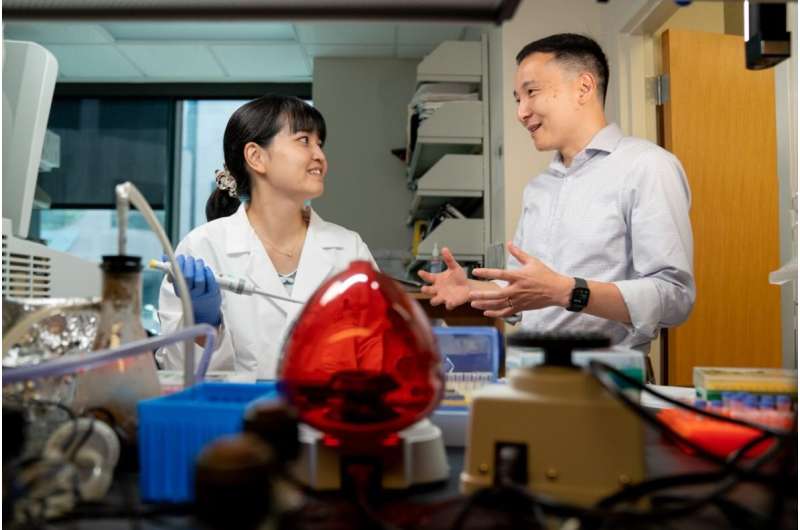
St. Jude Children’s Research Hospital scientists and collaborators in Sweden and Japan are reporting that the enzyme NUDT15 plays a role in how patients respond to antiviral therapy with the common drugs ganciclovir and acyclovir. The researchers showed that NUDT15 status can help predict how individuals will respond to treatment for cytomegalovirus, a serious infection common among people who receive bone marrow transplants. The paper was published today in Nature Communications.
“Our lab has a longstanding interest in understanding why patients respond differently to nucleoside analogs. These molecules represent a large class of drugs widely used in anti-cancer and antiviral therapy,” said co-corresponding author Jun J. Yang, Ph.D., St. Jude Pharmaceutical Sciences and Oncology. “A few years ago, we discovered an enzyme called NUDT15 that metabolizes the leukemia drug thiopurine. We found genetic variants in the NUDT15 gene that accurately predict the risk of thiopurine toxicity. These genetic factors are now routinely used to individualize the way we give thiopurine to leukemia patients to avoid side effects. Building on that, we wanted to know if drugs that are similar to thiopurine would also be affected by this enzyme, and were quite surprised to see such a remarkable effect on these popular antiviral therapies.”
Searching for a similar backbone
Pharmaceutical compounds are often made up of the same or a similar basic backbone. The researchers looked for drugs that share a similar chemical structure to thiopurine. The scientists generated a list of such drugs and conducted experiments to determine if those drugs were also metabolized by NUDT15. The work revealed that NUDT15 polymorphisms strongly influence metabolism of the common antiviral drugs ganciclovir and acyclovir. These two drugs are widely used to treat infections such as cytomegalovirus and herpes simplex virus.
“These drugs are an important component of antiviral treatment for patients, like those at St. Jude, who have compromised immune systems and cannot as readily fight off an infection,” said first author Rina Nishi, Ph.D., St. Jude Pharmaceutical Sciences. “We showed that NUDT15 can effectively inactivate these antiviral drugs.”
With colleagues in Sweden, led by co-corresponding author Pal Stenmark, Ph.D., Stockholm University and Lund University, the team captured the crystal structures of the acyclovir metabolite bound to NUDT15. This enabled the researchers to better understand how the enzyme interacts and the ways that it works differently compared to how NUDT15 affects thiopurine.
An international resource provides a clue
NUDT15 deficiencies are more common in people with Asian ancestry. With colleagues in Japan, the team looked at patient data from the Japanese Bone Marrow Transplant Registry. Many patients in the registry had been treated with either ganciclovir or acyclovir. The scientists found that patients with NUDT15 deficiency experienced better infection control, because they had a higher level of the active form of the drugs in their system.
The research suggests that understanding NUDT15 status may be important in predicting how patients respond to these antiviral therapies.
“Infections are a serious complication for children with cancer who undergo bone marrow transplant,” said co-corresponding author Motohiro Kato, M.D., Ph.D., Children’s Cancer Center, National Center for Child Health and Development, Tokyo. “This new understanding of NUTD15 and how it impacts antiviral drug metabolism could potentially tailor therapy based on NUDT15 genotype to improve efficacy and reduce toxicity.”
St. Jude Children’s Research Hospital

